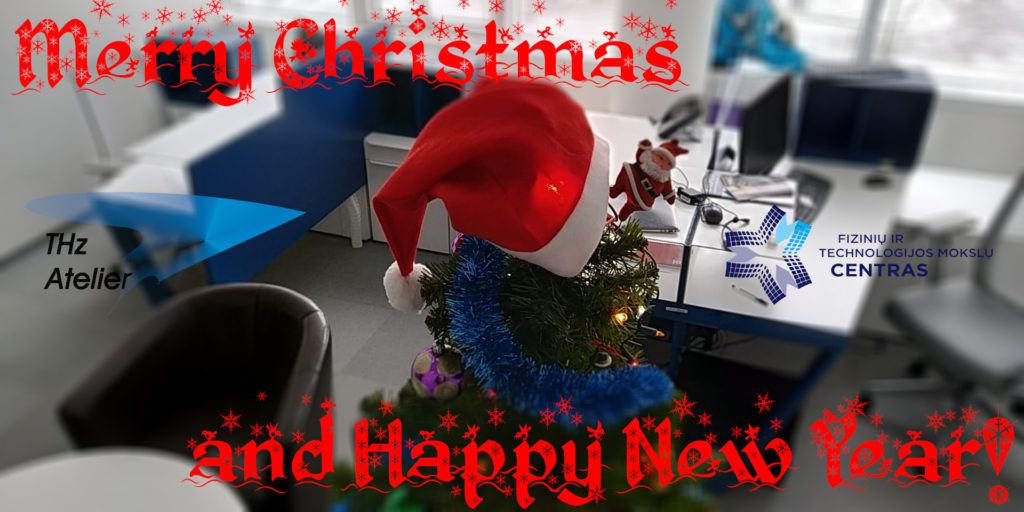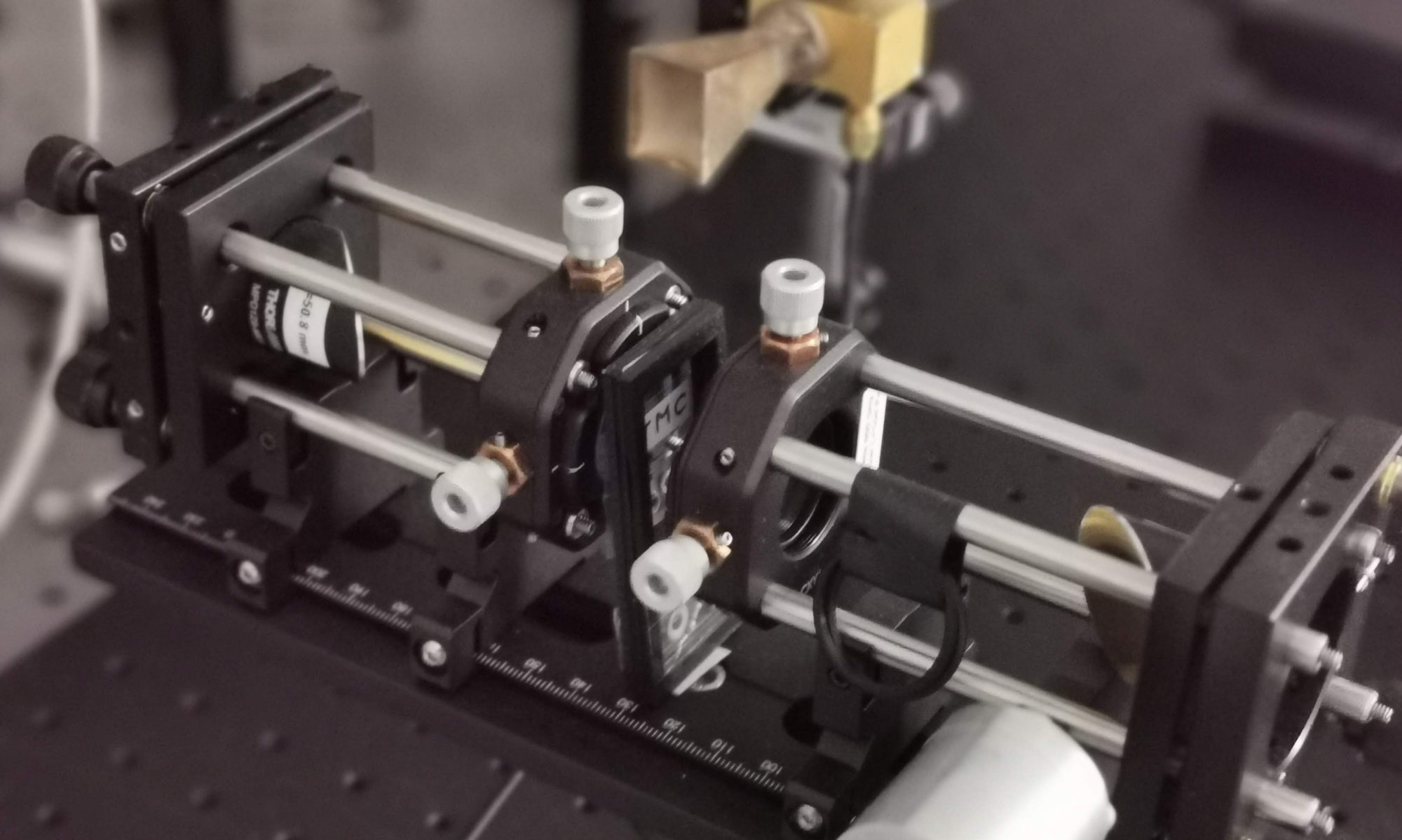From 28th of August till 2nd of September the THz Photonics laboratory is going to the 47th International Conference on Infrared, Millimeter, and Terahertz Waves (IRMMW-THz)! Our all lab is going to take part in this massive scientific event. This year we discuss very interesting scientific results in 4 oral and 6 poster presentations (10 papers in total). Let’s meet there: https://www.irmmw-thz2022.tudelft.nl/program.html
Dissipative Parametric Gain in a GaAs/AlGaAs Superlattice in PHYSICAL REVIEW LETTERS
New study is published in the journal “Physical Review Letters” from American Physical Society in the field of parametric generation of EM oscillations in GHz-THz frequency range. The work reports on the first observation of the dissipative parametric generation in a subcritically doped GaAs/AlGaAs superlattice (SL) subjected to a DC bias and a microwave pump. It enforces excitation of slow electrostatic waves in the SL that provide a significant enhancement of the gain coefficient.
The findings foresee the development of a miniature solid-state parametric generators of GHz-THz frequencies operating at room temperature.
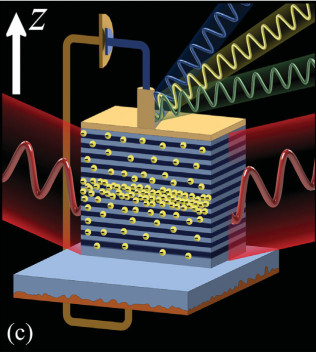
THz Atelier participated at the Franco-German Terahertz Conference (FGTC) 2022
The second FGTC took place in La Grande Motte, France, from 16th to 19th of May. THz Atelier presented their work on AlGaN/GaN HEMT based detectors and emitters.
https://terahertz2022.sciencesconf.org/
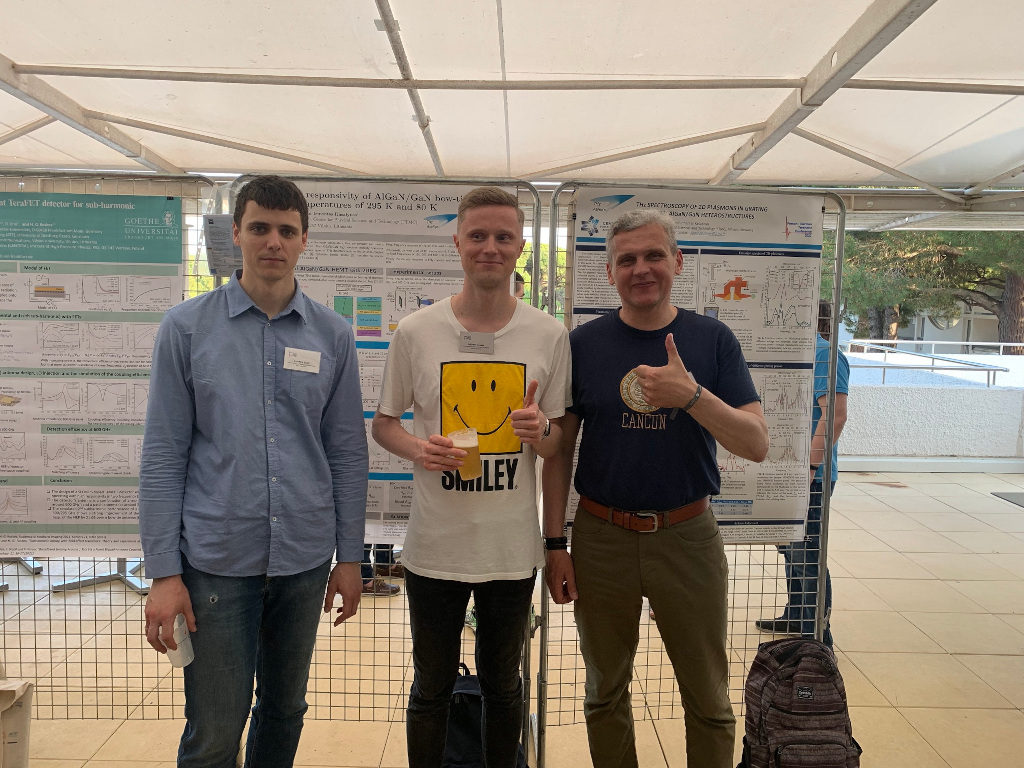
Rusnė Ivaškevičiūtė-Povilauskienė apie gyvybės paieškas kosmose LRT laidoje ,,Mokslas Skubantiems”
Godos Raibytės radio laidoje ,,Mokslas Skubantiems” apie gyvybės paieškas kosmose pasakoja THz fotonikos laboratorijos doktorantė Rusnė Ivaškevičiūtė-Povilauskienė, kuri 2017 m. stažavosi NASA AMES tyrimų centre. Laidos įrašas LRT mediatekoje.
High-Frequency and High-Power Performance of n-Type GaN Epilayers with Low Electron Density Grown on Native Substrate
The article by Roman M Balagula et al. just published in the journal MDPI Materials. The study is aimed towards the high frequency response properties of the n-type GaN epilayers on a native stubstrates. The results indicate new practical possibilities of the GaN material controlled by an external electric field for the development of novel devices for high-power and high-frequency applications.
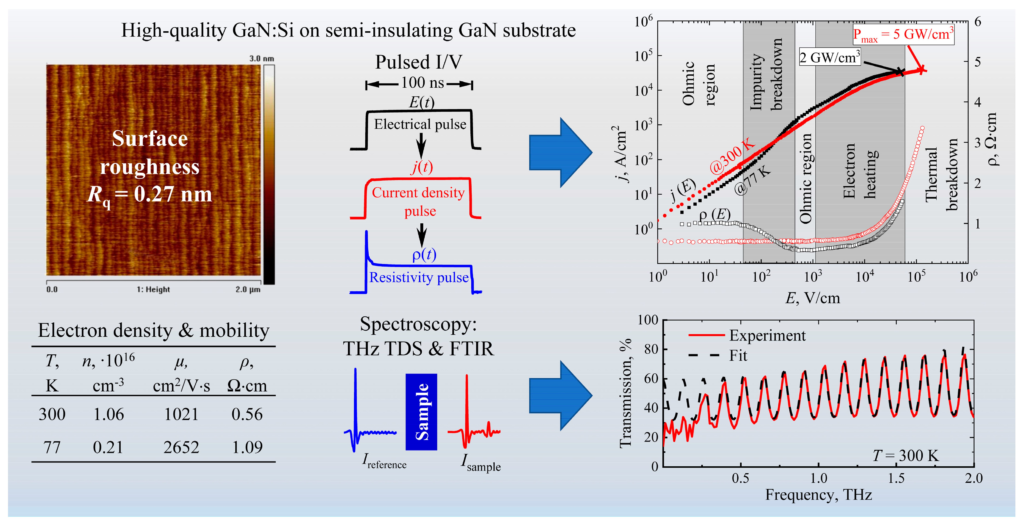
The work was supported by European Social Fund (project No 09.3.3-LMT-K-
712-19-0184) under grant agreement with the Research Council of Lithuania (LMT), the National Science Centre (Grant No. UMO-2017/27/L/ST7/03283) and the National Center for Research and Development (Grant No. WPC/20/DefeGaN/2018 and No. TECHMATSTRATEG-III/0003/2019/EnerGaN).
The article is published as a open access and can be accessed freely via DOI: https://doi.org/10.3390/ma15062066
Development of Quaternary InAlGaN Barrier Layer for High Electron Mobility Transistor Structures
Work by J. Jorudas et al. was recently published in the MDPI Materials journal reporting about the development of high electron mobility transistor structures based on quaternary lattice matched InAlGaN barrier layer.
The thorough study on the morphological, optical and electrical properties of the layers is accomplished aiming towards application for microwave power and terahertz plasmonic devices.
The paper is open access and is available through the link: https://doi.org/10.3390/ma15031118
The work was supported by the Research Council of Lithuania under the “TERAGANWIRE” project (Grant No. S-LL-19-1), by the National Science Center of Poland (Grant No. 2017/27/L/ST7/03283), by “International Research Agendas” program of the Foundation for Polish Science co-financed by the EU under the European Regional Development Fund (Nos. MAB/2018/9), and partially supported by the Polish National Center for Research and Development through projects No. WPC/20/DefeGaN/2018 and No. TECHMATSTRATEG-III/0003/2019.
New work published concerning advantages of optical modulation in terahertz imaging for study of graphene layers
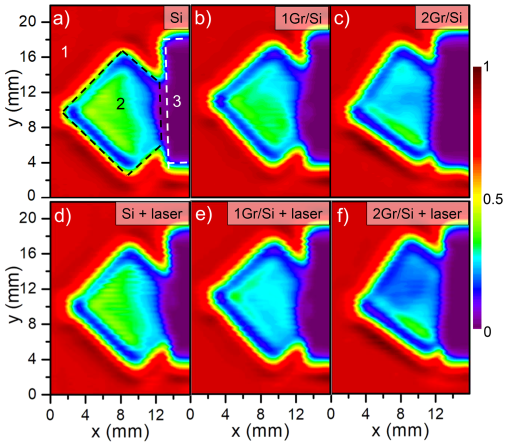
The newest study was published in Journal of Applied Physics by Rusnė Ivaškevičiūtė-Povilauskienė et al. about the advantages of optical modulation in terahertz imaging for study of graphene layers.
It was demonstrated that optical modulation together with simultaneous terahertz (THz) imaging application enables an increase in contrast by an order of magnitude, thereby illustrating the technique as a convenient contactless tool for characterization of graphene deposited on high-resistivity silicon substrates.
The technique is applied in the development and investigation of graphene-based optical diffractive elements for THz imaging systems.
The work achieved funding from Horizon 2020 program under Grant No. 823728 (DiSetCom) as well as by the Academy of Finland Flagship Programme “Photonics Research and Innovation (PREIN)” (Decision No. 320165).
The paper is open access and can be easily reached through the DOI: https://doi.org/10.1063/5.0074772
Smalsumo genas THz fotonikos laboratorijoje
Rolando Maskoliūno vedamoje laidoje ”Smalsumo genas” (transliuojama per LRT) kalbama apie metamedžiagas ir terahercų technologiją. Apie vykdomus metamedžiagų tyrimus FTMC pasakoja Dr. Dalius Seliuta, o apie terahercų taikymus — Dr. Linas Minkevičius.
Laidos įrašą galima pamatyti čia.
Annual Table Football Championship!
Traditional THz Atelier Table Football Championship was held just before Christmas. Ten participants registered to this event to prove themself as skillful players.

Five teams were competing for the very nice looking newly established prize. The prize is introduced this year and now will pass every year to new champions.
The teams were created randomly from the list of registered players using sophisticated algorithm just before the start of the championship. It was done to avoid illegal preliminary agreements among players despite some fierce protests.

After set of games the winners were announced and the prize was awarded to Dr. Mindaugas Karaliūnas and Vladislovas Čižas team. Congratulations to the new champions!
By the way, due to COVID-19 pandemic last year table football championship was postponed until this year. Looking forward to meet at the same table next year.
Season’s Greetings!
THz Atelier team wishes you Merry Christmas and Happy New Year! Let the year of 2022 (or 12022 in Holocene calendar proposed by Cesare Emiliani) be the most fascinating and prosperous.
